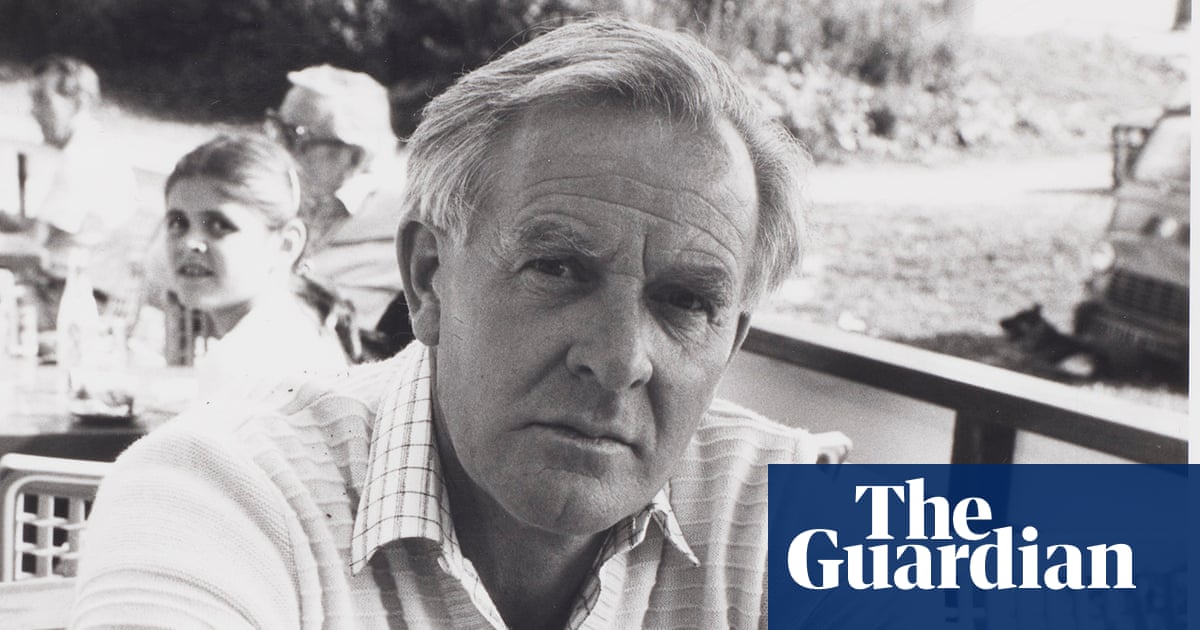Well, here is a weekend surprise… Red Hat engineer and Rusticl lead developer Karol Herbst has opened a Mesa merge request for “CLUDA” as a compute-only driver that implements the Gallium3D API atop the NVIDIA CUDA driver API. Wow.
Mesa’s…

Well, here is a weekend surprise… Red Hat engineer and Rusticl lead developer Karol Herbst has opened a Mesa merge request for “CLUDA” as a compute-only driver that implements the Gallium3D API atop the NVIDIA CUDA driver API. Wow.
Mesa’s…

Lamplighters, pavement artists, babysitters – they have taken on whole new meanings thanks to John le Carré. As his fans will know, they are part of tradecraft practised by the spies he wrote about so evocatively. Now, almost five years after…

Serif has made the iPad editions of its Affinity software, image editing app Affinity Photo, vector design software Affinity Designer, and page layout tool Affinity Publisher available for free.
The change comes ahead of a big…

Material success can be measured in a multitude of ways: cars, luxury items, and followers. But behavioral finance expert Morgan Housel has an unusual exercise to do so: a reverse obituary.
“It’s a little bit morbid, but it’s to write what you want your obituary to say, and then try to live your life up to that,” Housel tells Fortune in discussing his latest book “The Art of Spending Money.”
He isn’t the first to adopt the approach for living a fulfilled life. The sentiment echoes that of Berkshire Hathaway’s legendary investor, Warren Buffett, who says many of his life philosophies were gleaned from his right-hand man, Charlie Munger, who passed away in 2023.
“Early on, write your desired obituary, and then behave accordingly,” Buffett wrote in a previous shareholder letter in 2022.
Now it’s one of Housel’s ways to measure legacy too: if it’s not important enough to take to the grave, it doesn’t matter at all.
“If I were to write what I want my obituary to say, I would want it to hopefully say: ‘Morgan was a good husband, a good dad, a loving friend, helped his community, helped people in need’” he said.
Housel is known for his bestseller The Psychology of Money, which dissects how people’s previous beliefs, behaviors, and emotions impact finances. Now, he’s unveiling the psychology behind spending.
Housel emphasizes that spending is not about getting things down to a science, it’s an art that shouldn’t have a “one size fits all” approach. How you’re spending it also makes all the difference: Housel says if a majority of your expenditures are material items, you haven’t yet learned the most important life lessons.
Housel says that when he was in his 20s, his aspiration for the material world was at its highest– yearning for things like a new Ferrari or a mansion. Later in life, he realized that family and community took precedence over anything he had wanted to splurge on in his past.
“When you do that exercise [writing your obituary], you immediately realize what you would not care about: your salary, the size of your house, how often you bought a new car, where you went on vacation. That does not matter at all,” Housel added.
Other successful founders have emphasized long-term legacy over short-term spending.
Jeff Bezos famously used a similar approach to decide to leave his cushy financial job and start Amazon, for instance.
“I wanted to project myself forward to age 80 and say, ‘OK, now I’m looking back on my life. I want to have minimized the number of regrets I have,’” Bezos has previously explained.
“50 or 60 years from now, I am not going to say, I wish I earned more and spent more. There’s a very good chance we’re going to look back and say, ‘I wish I was more helpful and more loving to the people who I really cared about in my life’,” Housel said.


OpenAI’s new text-to-video app, Sora, was supposed to be a social AI playground, allowing users to create imaginative AI videos of themselves, friends and celebrities while building off of others’ ideas.
The social structure of the app, which…


Welcome to NeurologyLive® Brain Games! This weekly quiz series, which goes live every Sunday morning, will feature questions on a variety of clinical and historical neurology topics, written by physicians, clinicians, and experts in the fields…

Subcutaneously administered systemic therapies are expected to reduce administration times, minimizing the time an individual treatment chair or room is needed while simultaneously giving patients the freedom to choose how to spend more of their time outside the clinic, according to J. Thaddeus Beck, MD, FACP.
The most recent regulatory approval of subcutaneous treatment was announced on September 19, 2025, when the
The agent was tested in the phase 3 Study MK-3475A-D77 (NCT05722015) in patients with untreated, metastatic non–small cell lung cancer (NSCLC) without EGFR, ALK, or ROS1 genomic tumor aberrations. Patients were randomly assigned to receive subcutaneous pembrolizumab (n = 251) or IV pembrolizumab administered every 6 weeks with platinum doublet chemotherapy.
The results showed that the predefined acceptance margin was met for the pharmacokinetic end points with the lower boundary, 96% CI for cycle 1 area under the curve 0 to 6 weeks, and 94% CI for cycle 3 Ctrough, of the geometric mean ratios above the prespecified threshold of 0.8 for comparability. Descriptive analyses of efficacy also indicated that the confirmed objective response rate was 45% (95% CI, 39%-52%) in the subcutaneous arm vs 42% (95% CI, 33%-51%) in the IV arm. Progression-free survival and overall survival outcomes were also similar between arms.
“I think [this approval] is the wave of the future. [I expect that] more of these monoclonal [antibodies] will be given subcutaneously,”
In the interview, Beck discussed the regulatory agency’s approval of subcutaneous pembrolizumab, its significance for patients and providers, and considerations that should be made before the agent is introduced into clinical practices.
Beck: The approval of the subcutaneous form of pembrolizumab gives us another option that we can use to tailor treatments for patients’ individual situations. The main benefit is the ease and simplicity of administration [since it allows for a] shortened administration time. It’s a 2.4 mL or 0.5 teaspoon size injection that can be given in seconds instead of [over 30 minutes].
We’ve had very good feedback from patients who are on the trial [about] how it really changed the way they thought about treatment. They liked the fact that it was shorter and quicker, so that they could be in and out. They could have more time to do what they wanted to do before and after their treatment, [providing] much more of a pleasant experience for them.
The patients like it better. It will save chair time, so treatment chairs or rooms will not be occupied as long. You can cut the infusion time down. If it’s being given with another IV chemotherapy, you can drop the last infusion, given that it is subcutaneous, and the patients will have a better experience.
What is important to note about the design of the pivotal trial?
The trial was designed with two arms that compared sequential treatment. The first arm was IV therapy for [X] cycles, followed by subcutaneous therapy. The second arm was subcutaneous therapy, followed by IV therapy. Then patients were allowed to assess how they felt with the treatment and choose which one they’d like to continue with. Most patients chose the subcutaneous version.
There were no unique adverse effects or safety signals. Other than the administration difference, [the subcutaneous formulation] seemed to act in the same form and fashion [as the IV formulation].
People have to get partially undressed [to receive the therapy], so you’ll need a private area to [allow for that]. We’re in the process of building a new facility, and we’re taking this change into account. We’re creating a whole separate fast track area where patients can [experience] the faster workflow and have more privacy, so they can take advantage of this program.